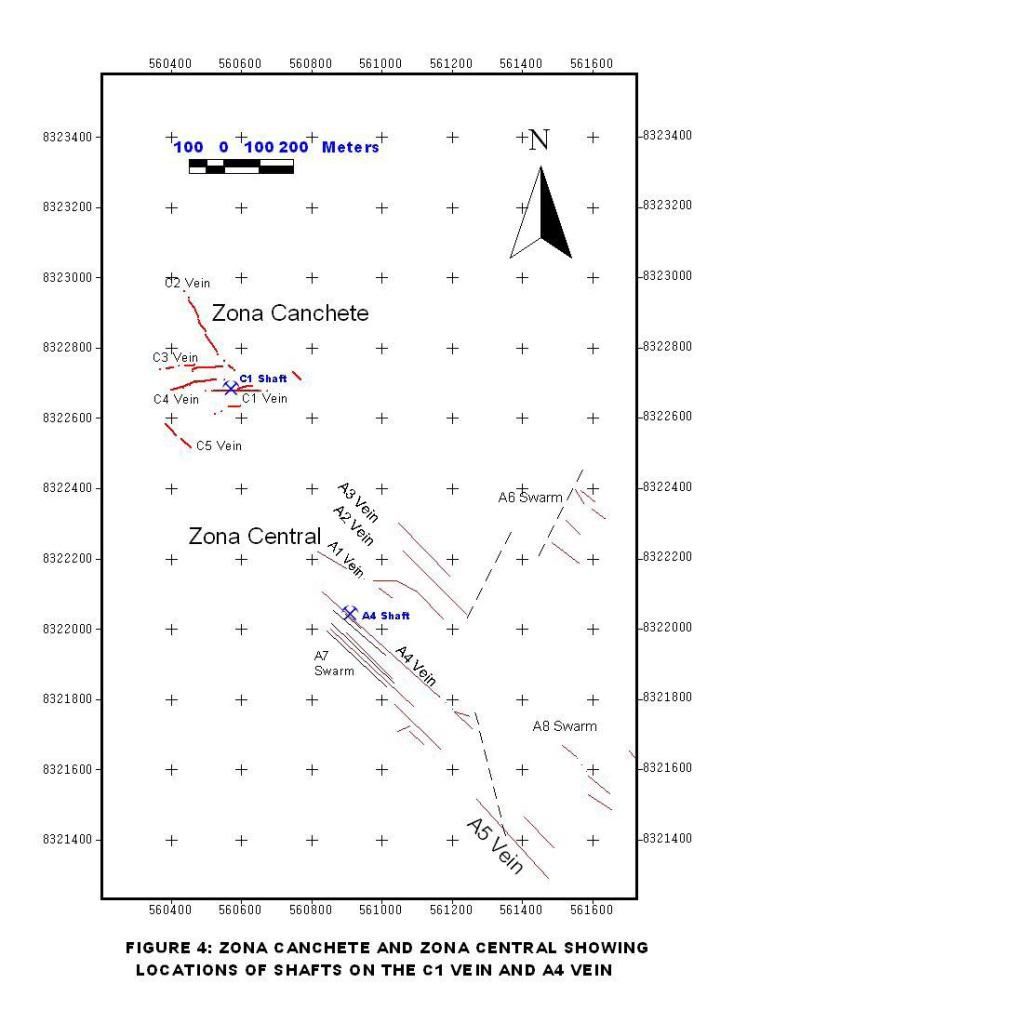A little geology
posted on
Aug 20, 2011 06:36PM

Keep in mind, the opinions on this site are for the most part speculation and are not necessarily the opinions of the company WITHOUT PREJUDICE


The above diagram shows approx 20 veins (the above diagram only represents about 1/7 of the property or 14 %)out of 50 plus that were found on the property up til early 2010. Since then, and as a result of the Quantec, at least one more has been found, the N-1 vein.The N-1 vein had a quick and dirty sample taken that assayed over 2 oz/t.This vein was found in an area that was mentioned as being low grade in 2008 and not much attention to this area was payed, until the Quantec Geophysics pointed the team back there to check a Quantec surface response. On this diagram, the N-1 vein would be located roughly around the North arrow, in the upper right portion.
Its been approx 1-2 years since we had updates on NEW veins. There have been more found, there is evidence of this in the 43-101 from last Sept and a couple little hints in NR,s. One of the main objectives of the trenching is to find new veins and prove contiuation of the existing ones. The amount of veins on the property is very important, and really, is what this post is about. The more found, (the auriferous ones) the better. Even finding one vein with an average grade of 1 g/t adds so much into the scheme of things, that it cannot be passed up.
You see, a lot of small miners or juniors will follow and mine 1 main vein and some mine several. These are costly if they have to sink shafts, but still very economical at todays prices and depending on the grade. The more prized deposits are large deseminated gold open pittables or multiple high grade vein deposits (like ours). The more veins you have that are gold bearing within an area, the more this pushes up your grade, hence adding more value to the deposit. The biggest most efficient trick, is to find as many as you can, as close TOGETHER as you can. For ex; if you look at the diagram above at the C-3 and C-4 veins. The distance between these veins is approx 30m. Even though the average grade of each vein may be 1 oz/t, your grade gets knocked down to 1 g/t over that area if you open pit. The idea situation here, would be to find another vein inbetween these two, to up the grade average and/or have an area of disseminated gold inbetween. 1 g/t today is very open pittable and I know we are well within these confines with the Tesoro. Yanacocha is being mined now at approx 0.3 g/t open pit in some parts of it. Rule of Thumb; 1 g/t for open pit, 6 g/t for shaft mining at a POG of $1200.These are my estimates.
By looking at the diagram above, you can see multiple veins and the distances between them. This should be drawing the picture in your mind that this will easily be an open pit mine, especially if new info fills in some of these gaps with new veins and expands the area covered by that diagram, will up the grade. The N-1 vein has already expanded the area, and how many other veins have been found that we do not know of yet? Look at all the A series veins, most of these are situated over the anomaly, if you do a quick head calculation you will see you will most likely come up with 1 g/t over that area, with the limited amount of info we have on hand.
There are some high grade resources by other companies that have several high grade veins aggregated to come up with 20 million ounces of gold. In comparison, we have over 50 veins, with many veins being high/bonanza grades. Our geology/deposit is a little different than the one mentioned above. The above is classified as a high grade epithermal vein system, I beleive it is unknown at this time if the system could be a mesothermal one. At this time, I beleive I can still use it for comparrison/ differences purposes.
Our system is being classified, (officially?) as a mesothermal system, having deep roots with the gold most likely being deposited at great depths (1-5 km) to the surface, but this is unknown, about the minerilzation depth, and would have to be proven. Nevertheless, epithermal systems will tend to be shallower than mesothermal, and mineralization in both,will depend on a few factors.
Its suspected that the above system could be a porphyry. If it is, I beleive it will closely match our giant anomaly. The best way to imagine a porphyry is like a mushroom, and this shape resembles our 3D image nicely, IMO. In a porphyry, gold will be in the veins and distributed in the adjoining rock, connected to the stem. The entire top of the mushroom is mostly mineralized, so the key to confirming this is to test the rock in between the veins for gold and the grade to tell you how rich it is. I beleive management may be doing this as part of the trenching.
Page 250 in the tech report will give you a look at the whole property, and maybe yourself you can draw other conclusions from the surface samples/ veins and see how it may be possible to have multiple little porphyry,s.
IMO
I am not a geo, but geo comments/discussions are welcome.